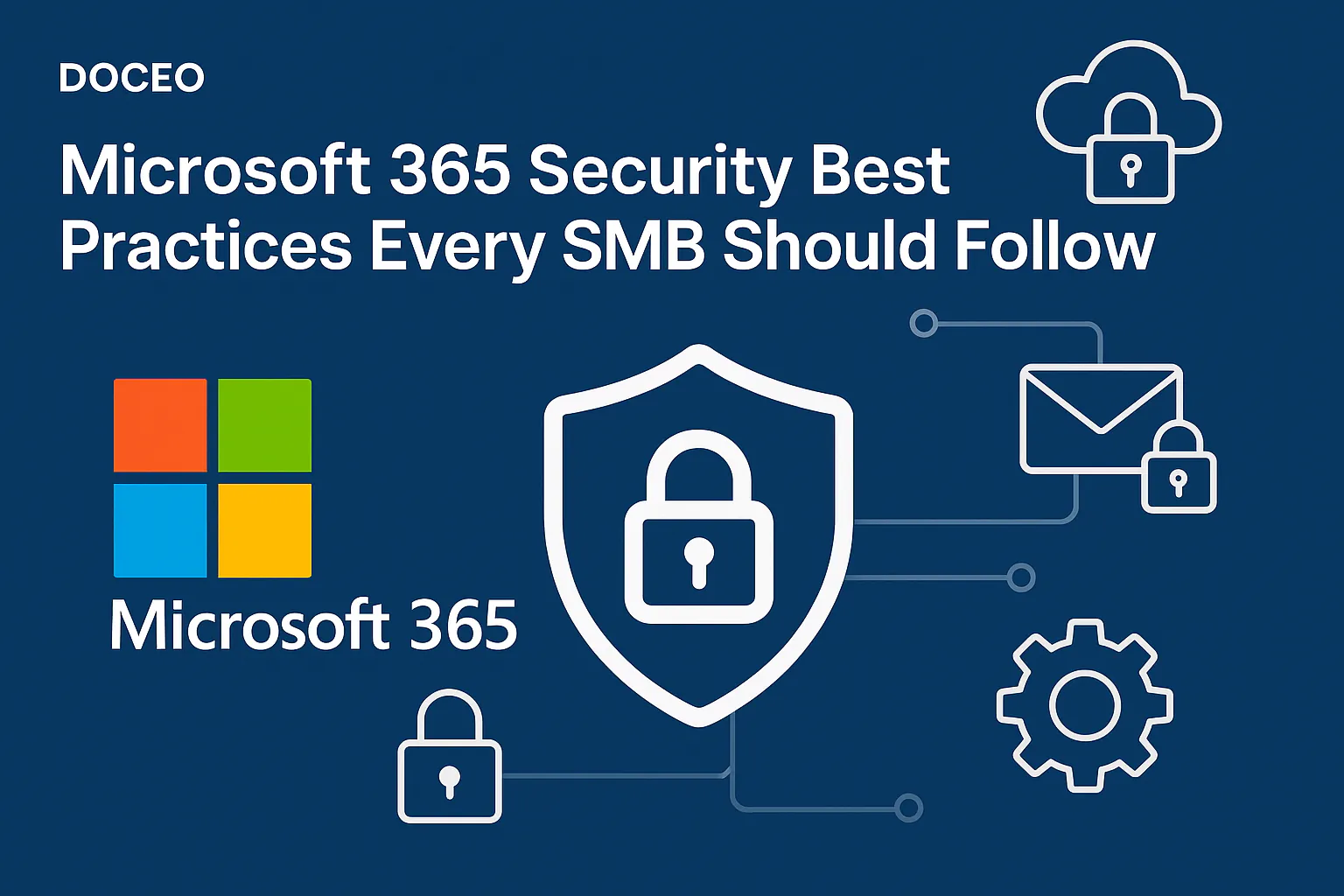Why Microsoft 365 Security Matters for SMBs
If you run a small or medium-sized business (SMB), chances are you rely on Microsoft 365 for email, file storage, collaboration, and more. But with convenience comes risk. Microsoft 365 is one of the most targeted platforms for cyberattacks. From phishing emails to compromised accounts, SMBs are not immune.
SMBs are often seen as easier targets than large enterprises, due to limited IT resources and less rigorous security policies. That makes implementing strong security practices not just advisable but essential.
Let’s break down the best practices that can help you fortify your Microsoft 365 environment and why each one matters.
1. Enable Multi-Factor Authentication (MFA) Immediately
What it is: Multi-Factor Authentication (MFA) requires users to provide two or more verification methods to log in—typically something they know (a password) and something they have (like a smartphone).
Why it matters: Passwords alone are no longer sufficient. MFA can block over 99.9% of account compromise attacks, according to Microsoft.
Pro tip: Use app-based authentication (like Microsoft Authenticator) instead of SMS for greater security.
2. Use Role-Based Access Control (RBAC)
What it is: RBAC allows you to assign permissions based on a user’s role within the company.
Why it matters: Not every employee needs access to sensitive data. Limiting access reduces risk if an account is compromised.
How to implement: Define roles clearly and assign the least privilege necessary. Review access regularly.
3. Enable Advanced Threat Protection (ATP)
What it is: Microsoft Defender for Office 365 (formerly ATP) protects against sophisticated threats like zero-day malware and phishing.
Why it matters: Phishing attacks can bypass traditional filters. ATP adds an extra layer of protection by scanning links and attachments in real-time.
Add-on note: This is a licensed feature, but well worth the investment.
4. Set Up Conditional Access Policies
What it is: Conditional Access lets you define when and how users can access Microsoft 365 apps based on signals like location, device, or risk level.
Why it matters: This ensures that only trusted users and devices can access sensitive resources, helping to prevent data leaks.
Example: Block access from countries your company doesn’t do business in, or require MFA on unmanaged devices.
5. Encrypt Sensitive Emails and Files
What it is: Encryption ensures that only authorized recipients can read sensitive content.
Why it matters: Email is still a major vector for data leakage. Encryption adds a layer of confidentiality.
Tool tip: Use Microsoft Purview Message Encryption, included in Microsoft 365 E3 and above.
6. Turn On Audit Logging and Retention Policies
What it is: Audit logs track user and admin activities, while retention policies ensure data is preserved for compliance.
Why it matters: If something goes wrong, logs provide a trail for investigation. Retention policies help meet regulatory requirements.
Caution: Audit logging must be manually enabled in some plans—don’t assume it’s on by default.
7. Use Microsoft Secure Score as a Guide
What it is: Secure Score is a Microsoft tool that assesses your current security posture and offers actionable recommendations.
Why it matters: It provides a prioritized roadmap to strengthen your environment without guesswork.
Best practice: Review Secure Score monthly to track progress and tackle new vulnerabilities.
8. Educate Employees on Cyber Hygiene
What it is: Training users to recognize threats like phishing, social engineering, and unsafe links.
Why it matters: The majority of breaches begin with human error. Security awareness training turns your staff into a human firewall.
Include: Simulated phishing campaigns and brief, recurring lessons.
9. Disable Legacy Authentication Protocols
What it is: Older authentication methods (like IMAP and POP) don’t support MFA and are easier to exploit.
Why it matters: Attackers often target these outdated protocols to bypass security controls.
Fix: Block legacy authentication via Conditional Access or security defaults.
10. Backup Microsoft 365 Data
What it is: A third-party backup solution ensures your data is recoverable even if Microsoft 365 experiences an outage or data loss.
Why it matters: Microsoft follows a shared responsibility model. They protect the infrastructure; you’re responsible for the data.
Choose wisely: Look for backup solutions that cover Exchange, OneDrive, SharePoint, and Teams.
Final Thought: Security is a Journey, Not a Checkbox
Microsoft 365 offers powerful tools, but no platform is immune to risk. The good news? These best practices aren’t just for enterprise giants. Every SMB can adopt them, and doing so could be the difference between business as usual and catastrophic loss.
Ready to Assess Your Microsoft 365 Security Posture?
Doceo offers expert guidance tailored for SMBs. Whether you’re just getting started or fine-tuning your setup, we can help you implement a customized security strategy for Microsoft 365. Contact us today or call 888-757-6626 to schedule a security assessment.
Doceo – Proven Technology. Proven People.
